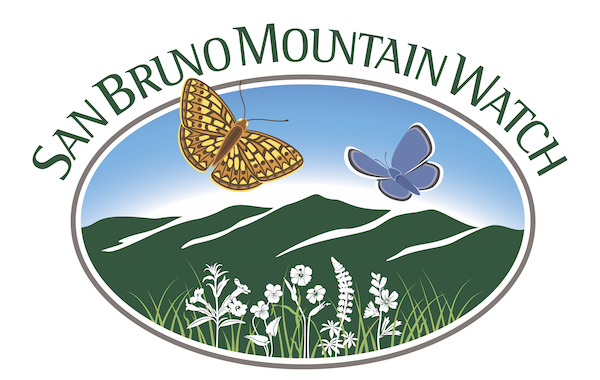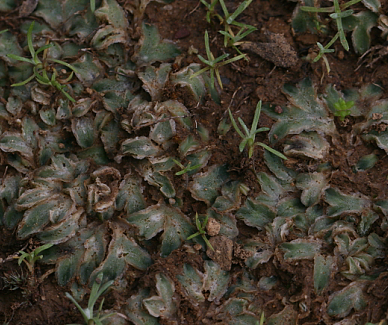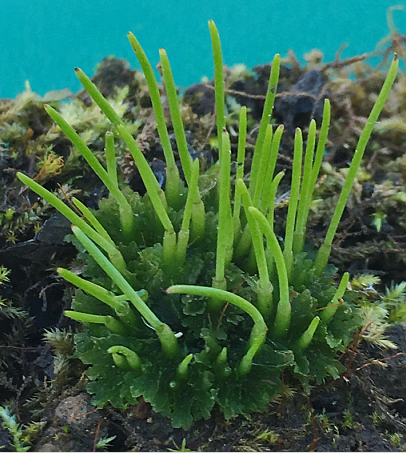David Nelson and Doug Allshouse are frequently on the Mountain in their search for interesting, rare and endemic plants and animals - this ongoing research is the basis for their upcoming book. Together they are writing The Natural History of the San Bruno Mountains. The book will be published by Heyday Books.
David Nelson, aside from being a surgeon, is a devoted Mountain Watcher and amateur botanist. Doug Allshouse is an expert on San Bruno Mountain flora & fauna who has studied the Mountain for 38 years.
Experience one of their recent escapades below, in search of an elusive hornwort!
Some background. There will be a chapter in the book on bryophytes: the mosses, liverworts, and hornworts. We have benefited from the teachings of Jim Shevock (the author of California Mosses and a staffer at CAS), and one of us (David) took a weekend bryophyte course from Bret Mischler, the director of the UC and Jepson Herbaria. We are working hard on this paraphyletic group, and even bought a new camera that does automatic, on-the-spot photo stacking. There are lots of mosses (tree mosses, creek mosses, rock mosses, and soil mosses), and we have about 20 of these. We have photographed at least four kinds of thalloid liverworts, with very interesting sporophytes. We would like to show you some.
This one is widespread:
Marchantia polymorpha, characterized by the air cells visible through the upper layer of the thallus and the little umbrella at the top of the sporophyte. It is the female sporophyte, called an archegoniophore.
This one grows in the Great Meadow, up above April Brook:
Asterella californica. The umbrella is called the archegoniophore, and the protruding white structure is the pseudoperianth, which contains the spores.
These two prefer moist mud, and can be found in the bog or in the Great Meadow:
These are two species of Riccia, the family of bifurcating thalloid liverworts, about 4-6 mm across the "leaf" (with a Marchantia horning in on the bottom).
We have also come across two leafy liverworts.
Porella navicularis
This dandy gold one is 3 cm tall and grows up vertically, near the ridgecrest, on soil, overlooking the Colma graveyards:
Frullania bolanderi
This diminutive one grows on trees in the bog, with "leaves" that are 1 mm in size:
Alas! Our lives were not complete: no hornworts.
It was not without our trying: you remember the little escapade with the, er, helicopter? If you don't remember, so much the better. That was on a search for a hornwort that Jim Shevock (CAS) and Ken Kellman (UCSC) had seen in 2018.
But in vain.
No hornworts.
Until this past weekend, on a hike in Owl Canyon, right along the path:
A hornwort, identifiable both by the "horns" (actually the sporophyte, the reproductive organ of the hornwort) and the blue-green color of the thallus, due to Nostoc in the thallus (a blue-green alge capable of fixing nitrogen; also found often as the third symbiont in lichens). It was right along the path going up Owl Canyon. No need to fight brush and poison oak for hours, just bend over and look. We are sure it has been there, under our feet, all these years. We just did not know how to look.
Now our bryophyte lives are fulfilled!
-David and Doug







